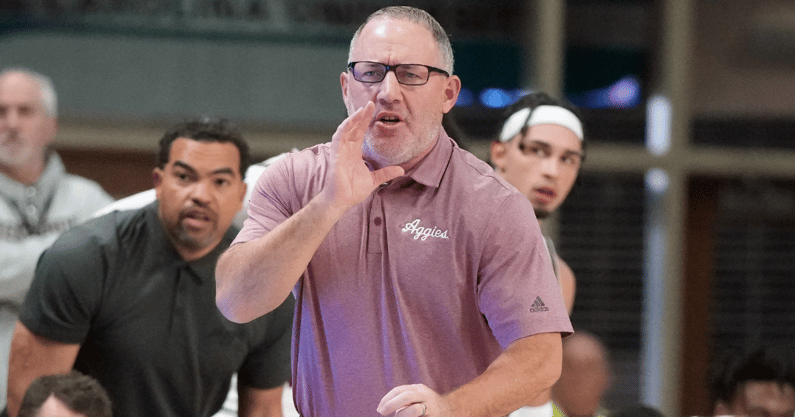Buzz Williams explains calling two timeouts so close together

Texas A&M was tied at 66 with Vanderbilt with under two minutes to go when Buzz Williams called a timeout.
Coming out of the timeout, the Aggies missed a layup but got the offensive rebound. With the shot clock resetting, Williams called a second timeout.
Texas A&M missed another layup after this timeout but got the offensive rebound once again and this time put it back to take a two-point lead. The Aggies would end up winning 72-66.
The Texas A&M head coach was asked after the game why he called those two timeouts in such rapid succession. Only 22 seconds of game time separated the two 30 second timeouts.
“I was just trying to manipulate the game,” Williams said. “There wasn’t necessarily a lot of wisdom. I thought the draw up was right. I thought we executed it really well. I thought they defended it well. I thought the offensive rebound at that moment out of the first timeout was ginormous. Similar to when I called that timeout against Florida when solo had it opposite our bench, I just didn’t like the vibe. So I called another one.”
Top 10
- 1New
Ranking SEC QBs
From top to bottom of conference
- 2Hot
Alabama stays hot
Tide lands another 5-star
- 3
Big Ten Football
Preseason conference ranking
- 4Trending
Paul Finebaum
Ominous Ohio State prediction
- 5
CFB Top 25
Predicting final 2025 rankings
Get the On3 Top 10 to your inbox every morning
By clicking "Subscribe to Newsletter", I agree to On3's Privacy Notice, Terms, and use of my personal information described therein.
Andersson Garcia hit the game-leading basket for the Aggies. Henry Coleman led the way for Texas A&M with 18 points while Tyrece Radford and Wade Taylor IV each had 14 points.
Buzz Williams is a big believer in not calling timeouts until you have to
Buzz Williams then explained his philosophy as a coach is to hold onto his timeouts for as long as possible before having to use them.
“Offensively, if you take Texas A&M and you take Vanderbilt, there’s 12 other teams left in SEC,” Williams said. “If you took the play catalog of those other 12 teams and added them all up, it wouldn’t not be more than what Vanderbilt runs. This is only my opinion. I think you have to, as best you can, hold timeouts for as long as you can no matter what the line is, no matter what the perception is. They have so many plays to take advantage of whatever you’re doing defensively. They have so many plays that are a series of plays for each specific player that if you think as a coach — in my opinion — that it’s going to be a one or two possession game, I think you have to hold those timeouts.”